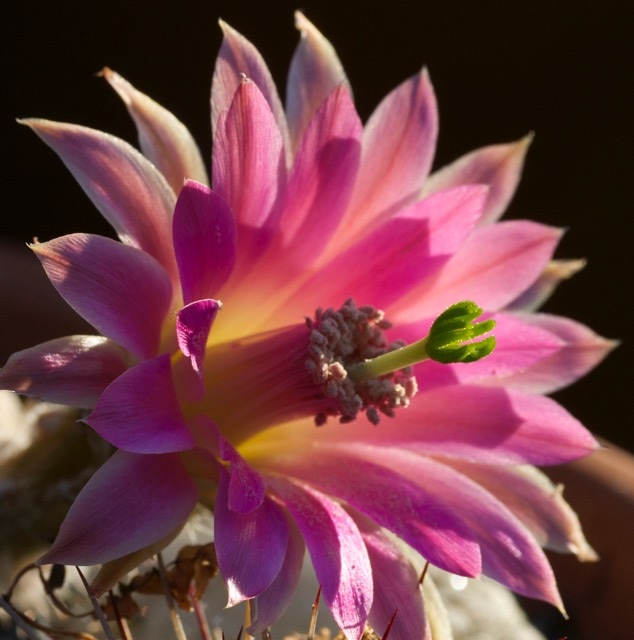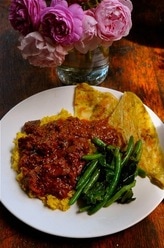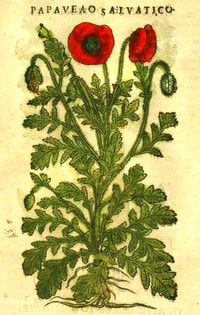Spices can change the way you cook and look at food in general; such is the power of flavour and the benchmark of a valuable paste. I credit harissa with our increasing swerve toward meat-free meals; anyone mourning the savoury middle provided by meat can find consolation in its salty, articulate depths and begin to look on a mixed veg roast with more than resignation. That said, we eat it with steak, couscous, fish, tagine-type stews, in humus, pumpkin soups, curries; practically everything except ice cream and I wouldn't try getting past me in a dark alley with a bowl of that shit either. It tastes honestly of its ingredients; if you know them you may already be getting a bit sweaty and impatient, but lo, it is even more than the sum of its parts.
A word about heat- I wouldn't go down the macho scotch-bonnet/bird's eye road, even if that's your usual approach; it's not that kind of thing. If you prefer to walk on the mild side, split the chilies and scrape out the seeds and pithy bits; this will render all but the most fierce far more palatable. If you have gloves, use them but be aware you'll probably have to throw them out afterwards. The disposable latex type are great but if you're going commando, don't touch your face with your hands until you've washed them thoroughly and be aware that even this may not absolve you from chili/finger/eye syndrome and more curse words at volume than you thought yourself capable. Consider too any pets that might wander in and be exposed to stray seeds or drips.

Here's my no cook, fresh-chili version. It is a 'wholegrain' type of beast because I prefer the fresh, open flavours and textures, and in my opinion, this gives a more predictable and reliable result. Ground spices are often of dubious merit, having long since given up their volatile goodness and that they are handy targets for adulteration doesn't weight in their favour either.
The amounts quoted achieve a golden mean, but I've made perfectly acceptable harissa with some very eccentric ratios so don't panic if you're short here or there. The chilies in the pic above weigh 200 grams unseeded, to give you an idea, the largest ones being as long as my (very long) hand. The recipe is endlessly scalable so you can go crazy and end up with lots of jars but remember you'll need room in the fridge for them. Harissa can apparently survive at room temps but I have never stored it this way and cannot recommend it. If you like a smoky flavour, blacken the chillies over a flame or under a grill as you would capsicums before blending them. You can pan-roast the spices lightly before hand if preferred- I never bother.
(Many thanks to Jarrod the chili pimp for the luscious examples pictured.)
YOU WILL NEED:
-100 grams fresh chilies.
-6 cloves of garlic. Or whatever garlic you have. Not important.
-⅓ cup of plain salt. Don't waste your fancy salt, table is fine.
-½ cup of coriander seeds. You can bruise these in a pestle but I never do.
-⅓ cup cumin seeds. Ditto as above.
-⅔ cup olive oil. Not extra virgin, just plain. Rice bran oil in a pinch.
-Juice of one lemon, a bit of chopped preserved lemon if you like, or fresh zest. You can leave the lemon out altogether; it's not crucial.
-More oil to top off the jars with.
-Clean, sterilized jars.
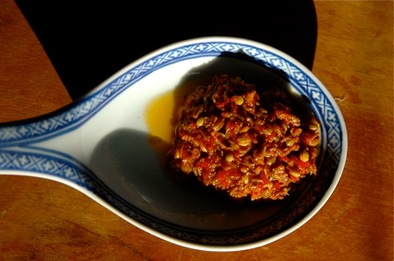
Put everything else in a big bowl, add the chilis and mix it all together really well. Really well; the salt can ball and hide so work it thoroughly. And that's it, pretty much.
Sterilize however many jars you think you'll need; from memory, I think one really large jam jar should do you for the 100g version, but I make industrial quantities now. Clean another smaller jar to take any overflow. I top the jars off with a little extra oil to occlude the contents and keep air out.
Add a big tablespoon to curries, sauces and stews, fry in oil before adding fish fillets and finish with extra lemon juice, add to soups etc etc. I think you can add it to bread dough as well which would probably be absolutely delicious; if you're making little mezze pizza type things you could roll some into the dough to create swirls in the finished item. Also delicious as a seasoning for couscous; add a teaspoon or more to the dry grains and stir through before adding hot water and hit it with some extra lemon. Oh and tarka dahl; add it to the lentils with some tumeric. I could go on, but you get the idea.
céili o'keefe

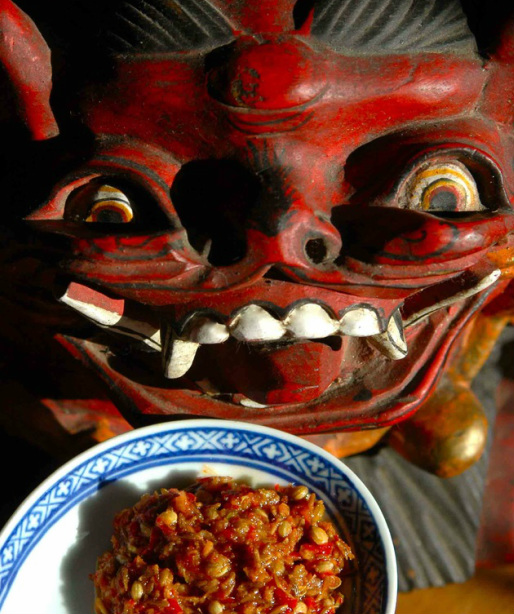
 RSS Feed
RSS Feed













